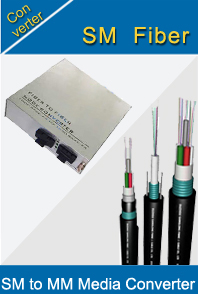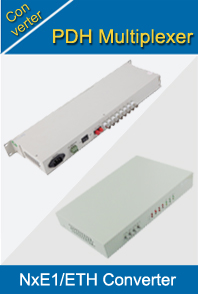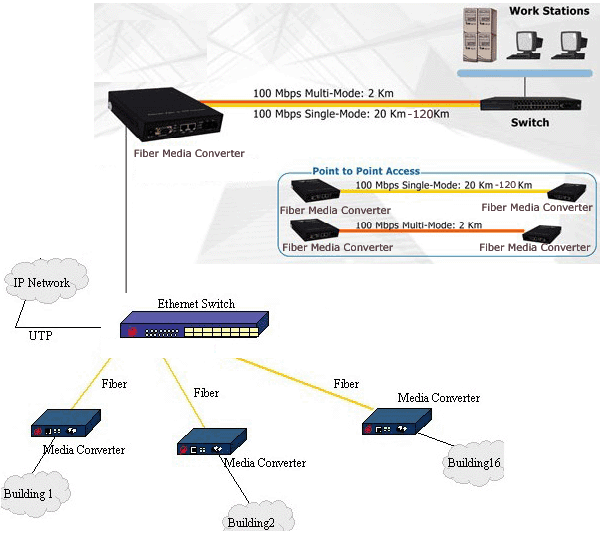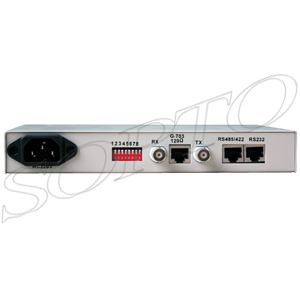-

- Sopto Home
-

- Special Topic
-

- Converter Knowledge
-

- What is the Difference between RS232 and RS485 Serial Interfaces
Converter Knowledge
- Form Factors and Application of Ethernet Media Converter
- Ethernet over 4 E1 Converter Brief Introduction
- What is the Difference between RS232 and RS485 Serial Interfaces
- What is the Difference between RS232 and RS485 Serial Interfaces
- How to Convert an Analog Telephone to VoIP Protocol?
- How to Find the Internet Protocol Address and Media Access Contr
- How to Convert from Fast Ethernet to Fiber Optics?
- How to Connect a Fiber Converter?
- How to Convert Ethernet to Fiber Media Converters?
SOPTO Special Topic
Certificate



Guarantee
Except products belongs to Bargain Shop section, all products are warranted by SOPTO only to purchasers for resale or for use in business or original equipment manufacturer, against defects in workmanship or materials under normal use (consumables, normal tear and wear excluded) for one year after date of purchase from SOPTO, unless otherwise stated...
Return Policies
Defective products will be accepted for exchange, at our discretion, within 14 days from receipt. Buyer might be requested to return the defective products to SOPTO for verification or authorized service location, as SOPTO designated, shipping costs prepaid. .....
Applications
An Ethernet to Fiber Media Converter can also be used where there is high level of electromagnetic interference or EMI which is a common phenomenon found in industrial plants. This interference can cause corruption of data over copper-based ethernet links. Data transmitted over fiber optic cable however is completely immune to this type of noise. An Ethernet to Fiber Optic Converter therefore enables you to inter-connect your copper-ethernet devices over fiber ensuring optimal data transmission across the plant floor.
SOPTO Products
- Fiber Optic Transceiver Module
- High Speed Cable
- Fiber Optical Cable
- Fiber Optical Patch Cords
- Splitter CWDM DWDM
- PON Solution
- FTTH Box ODF Closure
- PCI-E Network Card
- Network Cables
- Fiber Optical Adapter
- Fiber Optical Attenuator
- Fiber Media Converter
- PDH Multiplexers
- Protocol Converter
- Digital Video Multiplexer
- Fiber Optical Tools
- Compatible
Related Products
Performance Feature
Converter Knowledge
Recommended


What is the Difference between RS232 and RS485 Serial Interfaces Part 2?
RS485 Introduction
Also defined by the EIA/TIA standard, this interface is now called TIA-485. It defines not only a single device-to-device interface but also a communications bus that can be used to form simple networks of multiple devices. Its configuration and specifications also extend the range and data rate beyond the RS232 interface capabilities.
The RS485 standard specifies differential signaling on two lines rather than single-ended with a voltage referenced to ground. A logic 1 is a level greater than –200 mV, and a logic 0 is a level greater than +200 mV. Typical line voltage levels from the line drivers are a minimum of ±1.5 V to a maximum of about ±6 V. Receiver input sensitivity is ±200 mV. Noise in the range of ±200 mV is essentially blocked. The differential format produces effective common-mode noise cancellation.
The standard transmission medium is twisted-pair cable of either #22 or #24 AWG solid wire. Two lines are minimum but a third reference wire can be used. Four-wire cables can also be used if full-duplex operation is desired. The cables may be shielded or unshielded, with unshielded the most common. The cable is treated as a transmission line. The nominal characteristic impedance is 100 or 120 Ω. Terminating load resistors are required to ensure a matched line condition, which prevents reflections that introduce data errors.
E1 to RS232 RS422 RS485 Protocol Converter
The standard does not define specific connectors. Various connection methods have been used, including the RS-232 DE-9 connector. Simple screw terminal connections are common in some types of industrial control equipment.
Cable length defines the upper data rate. But because of the lower logic voltage levels and the differential connection, data rates can exceed 10 Mbits/s depending on cable length. Maximum cable length is commonly defined as 1200 meters or about 4000 feet. The typical maximum data rate at 4000 feet is 100 kbits/s. A general guideline is that the product of the length of the line in meters and the data rate in bits per second should not exceed 108. A 20-meter cable, for example, would allow a maximum data rate of 5 Mbits/s.
The RS-485 interface can be used in simplex of half-duplex modes with a single-pair cable. Full-duplex or simultaneous transmit and receive operations can be implemented with a two-pair cable. A common configuration is bus network with multiple drops or connections. The standard specifies a maximum of 32 drivers (transmitters) and 32 receivers (Fig. 5). Line drivers are disconnected from the line when not transmitting. All receivers are fully connected, and the bus line is terminated in a load matching resistance.
.png)
Fiugre 5. This is a representation of a typical TIA-485 differential bus showing individual drivers (D) and receivers (R) as well as transceivers. Note the end of bus termination resistors.
The standard has not defined a specific communications protocol. The standard UART protocol is sometimes used. Most applications define a unique protocol.
Interface Variations
Several variations of these two standards are occasionally found in practice. RS422 is a variation of RS485 with similar specifications but is designed only for one driver and up to 10 receivers. Logic levels range from ±2 to ±6 V. RS423 is a single-ended rather than differential variation of RS422. Otherwise, other specifications are similar to the RS485 interface.
Applications
The TIA-232 standard is currently deployed in a wide range of low-data-rate short-range applications. It is particularly effective in equipment used in noisy environments such as factories, process control plants ,and utilities sites. Cable lengths are typically less than 50 feet. Common equipment includes low-speed modems, industrial control equipment like programmable logic controllers (PLCs), computer numerically controlled (CNC) machine tools, robots, embedded control computers, medical instruments and equipment, and embedded controller development systems.
The TIA-485 interface is also widely used in industrial applications where higher speeds and longer distances are needed. It is used in the same type of equipment as defined for the RS-232 interface plus devices like point of sale (POS) terminals, metering instruments, and large special automated machines. Networks defined by field buses like Profibus and Modbus use it as well.
Most new equipment uses the popular USB interface. However, it is often necessary or desirable to convert from one interface to another to allow different types or ages of equipment to be used together. Various converters are available to convert USB to TIA-232 or TIA-485, TIA-232 to TIA 485, or vice versa.
Summary
In general, the RS232 is best for short-distance low-speed requirements. It is simple and low cost, and plenty of components like line drivers and receivers, UARTs, and connectors are available to build the interface. Some drivers permit data rates to 2 or 3 Mbits/s for short lines. Most interface chips include a charge pump dc-dc converter that supplies the positive and negative supply voltages allowing the IC to operate from a single 3.3- or 5-V supply.
The RS485 is for higher speeds over longer ranges or if duplex networking capability is required. Again, many standard parts are available to create the interface. ICs have drivers and receivers that can permit more than 32 drops, and data rates can be as high as 40 Mbits/s. Some ICs also include dc-dc converters to furnish dual supply voltages (see the table).
.png)
Key characteristics of RS232 and RS485 Serial Interfaces
Sopto supply high quality protocol converters like E1 to Fiber Converter, V.35 to ETH Converter and N x E1 to ETH Converter and so on for network protocols conversion. For the newest quotes, please contact a Sopto representative by calling 86-755-36946668, or by sending an email to info@sopto.com. For more info, please browse our website.





